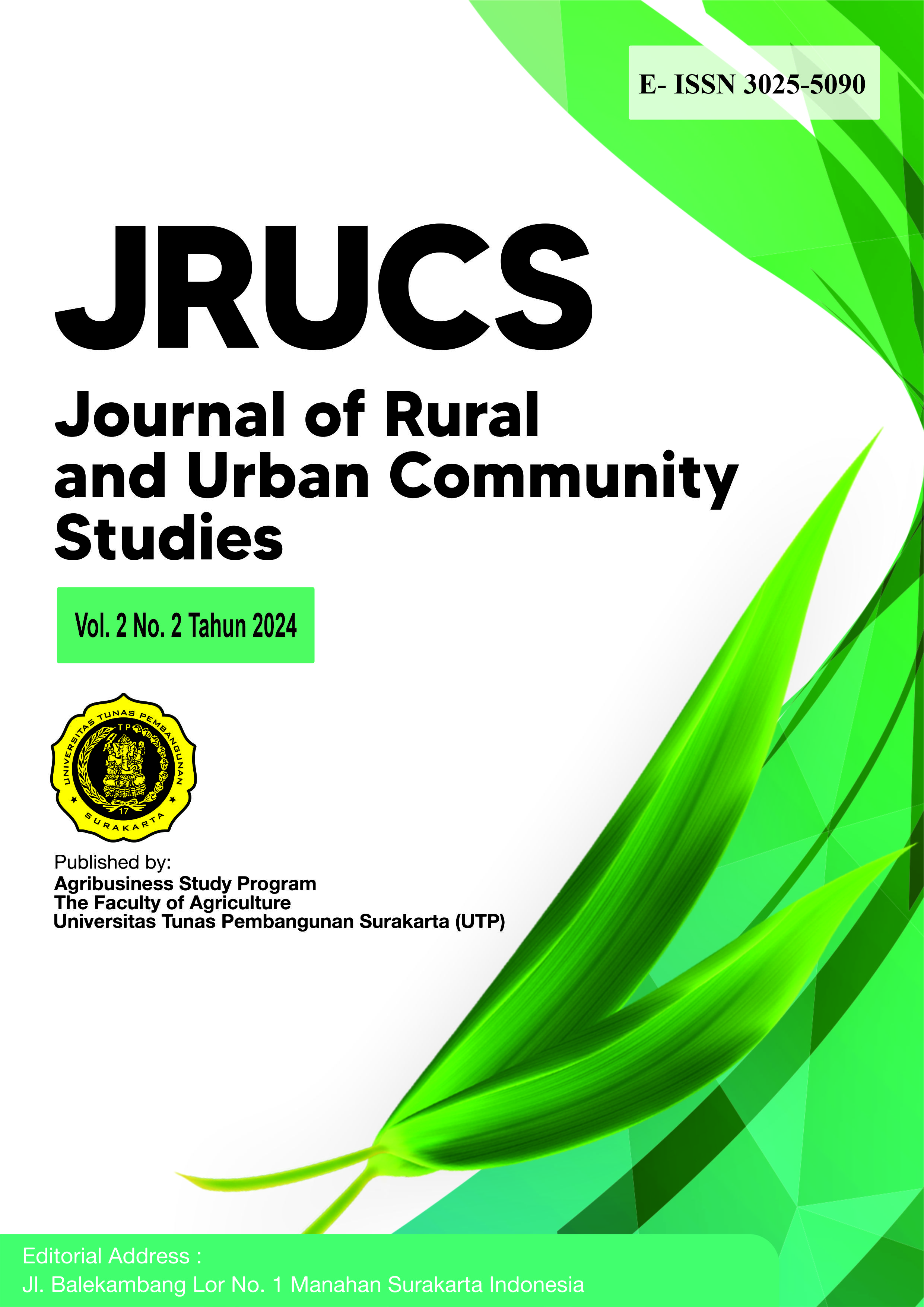Analysis of Rice Demand in Klaten Regency
Abstract
This study aims to analyze the influence of rice prices, population size, and income on rice demand, as well as to determine the elasticity of rice demand in Klaten Regency. A descriptive analysis method was employed using secondary time series data over a period of 10 years (2013-2022), which included rice demand and population data. The data analysis model applied was multiple linear regression and classical assumption tests. Hypotheses were tested using t-tests, F-tests, and R-squared tests. The results indicate that: 1) Rice prices have a negative influence on rice demand, with a p-value of 0.06; 2) Population size has a positive influence on rice demand, with a p-value of 0.003; 3) Per capita income positively influences rice demand, with a p-value of 0.004; and 4) Rice demand is inelastic, as the price elasticity coefficient (0 < Ep < 1) suggests that changes in rice demand are smaller than changes in rice prices. Income elasticity (EI > 1) indicates that rice demand increases significantly with higher income levels.


